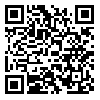دوره 17، شماره 4 - ( 9-1398 )
جلد 17 شماره 4 صفحات 394-385 |
برگشت به فهرست نسخه ها
چکیده: (4398 مشاهده)
Objectives: The modulation of the dorsolateral prefrontal cortex (DLPFC) activity enhanced the prospects of substance use disorders rehabilitation, using non-invasive brain stimulation, such as transcranial Direct Current Stimulation (tDCS).
Methods: We carried out a randomized sham-controlled clinical trial to assess the effect of repeated tDCS at DLPFC on drug craving in 30 abstinent male methamphetamine users. The participants underwent 5 sessions of 20 minutes bilateral real or sham 2 mA tDCS (anode right/ cathode left) of DLPFC. The Desire for Drug Questionnaire (DDQ) was used for assessing instant craving. The cue-induced craving was rated on a Visual Analog Scale (VAS) after the verbal induction of craving.
Results: The findings of this study indicated that cue-induced craving reduced significantly in tDCS related to sham (P<0.05), but tDCS did not significantly alter instant craving.
Discussion: The results indicated that repeated bilateral tDCS over DLPFC was not effective in reducing self-report instant craving, but reduced self-reported craving in the craving induction condition.
Methods: We carried out a randomized sham-controlled clinical trial to assess the effect of repeated tDCS at DLPFC on drug craving in 30 abstinent male methamphetamine users. The participants underwent 5 sessions of 20 minutes bilateral real or sham 2 mA tDCS (anode right/ cathode left) of DLPFC. The Desire for Drug Questionnaire (DDQ) was used for assessing instant craving. The cue-induced craving was rated on a Visual Analog Scale (VAS) after the verbal induction of craving.
Results: The findings of this study indicated that cue-induced craving reduced significantly in tDCS related to sham (P<0.05), but tDCS did not significantly alter instant craving.
Discussion: The results indicated that repeated bilateral tDCS over DLPFC was not effective in reducing self-report instant craving, but reduced self-reported craving in the craving induction condition.
نوع مقاله: پژوهشي |
موضوع مقاله:
روانشناسی
دریافت: 1396/10/18 | پذیرش: 1397/1/16 | انتشار: 1398/10/8
دریافت: 1396/10/18 | پذیرش: 1397/1/16 | انتشار: 1398/10/8


